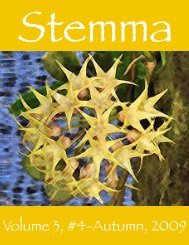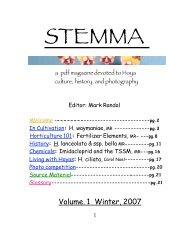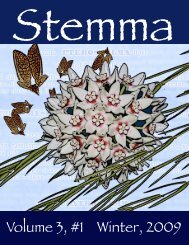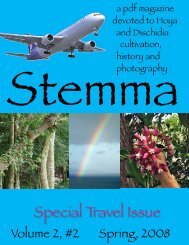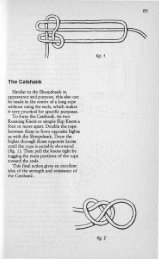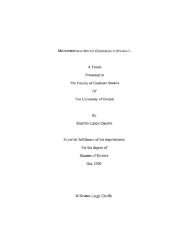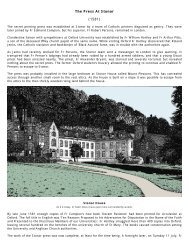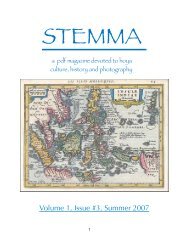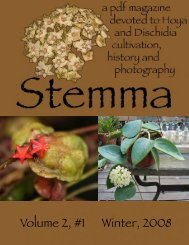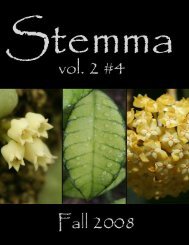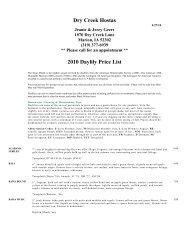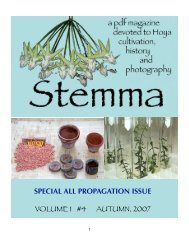Volume 3, Issue #2 - Cubits
Volume 3, Issue #2 - Cubits
Volume 3, Issue #2 - Cubits
You also want an ePaper? Increase the reach of your titles
YUMPU automatically turns print PDFs into web optimized ePapers that Google loves.
25: section Antiostelma Tsiang & P. T. Li<br />
Etymology: “antio”= “opposite” L. (?) + “stelma” = “crown”, Gr.<br />
Type species: Hoya manipurensis Deb<br />
Overall form: H. manipurensis is a scrambling, non-twining epiphyte with small, heart-shaped, succulent<br />
leaves and small, tube-shaped, greenish-white flowers. H. telosmoides, also possibly belonging<br />
grouped into this section, is a twining epiphyte with small, urn-shaped white flowers with elongated,<br />
spreading corolla tips.<br />
Distribution: southern China, eastern India, Burma, Thailand (all H. manipurensis) & Borneo (H. telosmoides).<br />
Publication: (see Taxonomic considerations, below) (as a section) Acta Phytotax. Sin. 12(1): 126. 1974.<br />
Original description: (translated from Latin by Mark Randal) “similar to section Pterostelma (Wight), corolla<br />
cylindic, lobes erect twisting to the left, staminal corona erect margins recurved, pollinia almost<br />
subquadrate-ovate with a well distinguished pellucid margin at the base.”<br />
Revised descriptions: none.<br />
Salient features:<br />
Pollinarium- pollina are rounded, slightly longer than wide, translators are narrow, corpuscula are relatively<br />
small.<br />
Corona- segments are laterally compressed, inner lobe is acute and erect, elevated high above the outer<br />
corona lobe apex. The anther apex is elongated and greatly exceeds the height of the inner corona lobe<br />
apex.<br />
Corolla- urceolate, densely pubescent on the inner surfaces.<br />
Raceme- loosely convex.<br />
Species thought to belong in this section/complex:<br />
Hoya manipurensis Deb (type) Hoya telosmoides R. Omlor (?)<br />
Taxonomic considerations: This taxon was originally recognized as genus Micholitzia N. E. Brown<br />
(1909). This taxon was also published as Hoya section Antiostelma Tsiang & P. T. Li (1974) and as genus Antiostelma<br />
(Tsiang & P. T. Li) P. T. Li (1992). These later two publications were produced on the assumption that<br />
this group was an un-described genus, missing the earlier publication of Micholitzia. The two genus<br />
names were later reconciled under Micholitzia N. E. Brown by P. T. Li et al. (1994) (see the Reprint section<br />
on page 29 of this issue of Stemma).<br />
This taxon was taken back into the genus Hoya by Livia Wanntorp et al. (2007a) as a single species,<br />
under the name Hoya yuennanensis Hand.-Mazz. This name later proved to be unsupportable, and the<br />
name was then recognized as Hoya manipurensis Deb (Wanntorp, 2007b).<br />
Hoya telosmoides also shares several key features of corona and pollinaria morphology with Hoya manipurensis,<br />
and so may belong grouped into section Antiostelma.<br />
The name Antiostelma as a section may prove to be an invalid name, as Tsiang & Li’s publication of section<br />
and genus were later found to be synonymous with genus Micholitzia. The name Micholitzia, therefore,<br />
may be a more suitable name for this section.<br />
20



